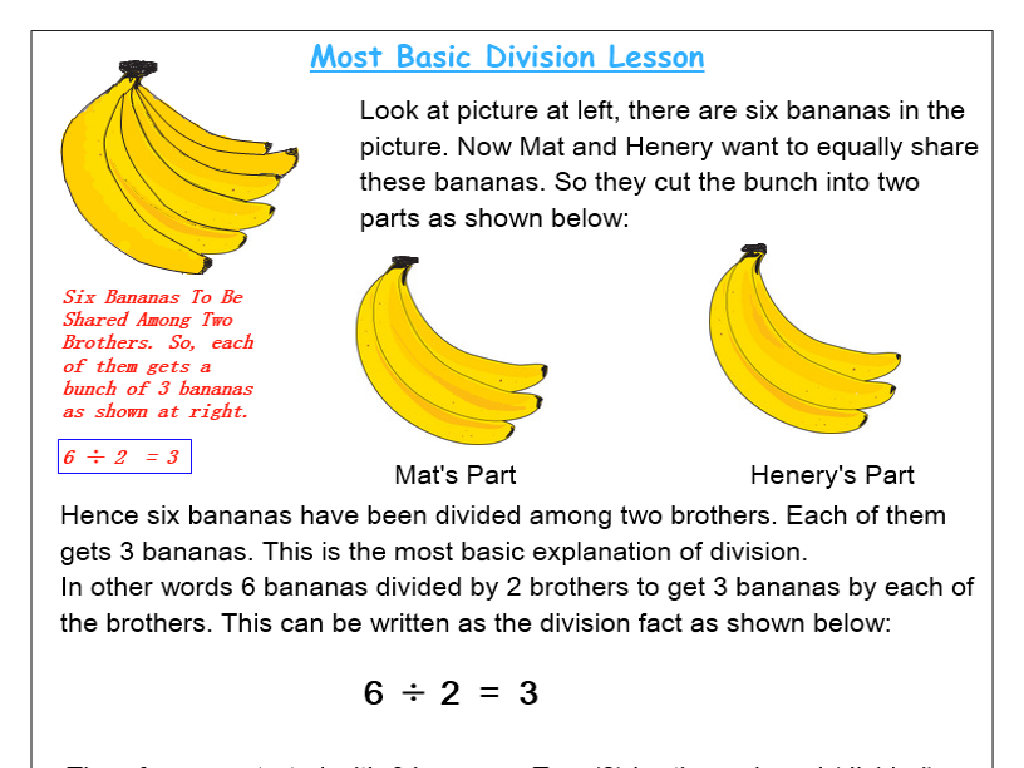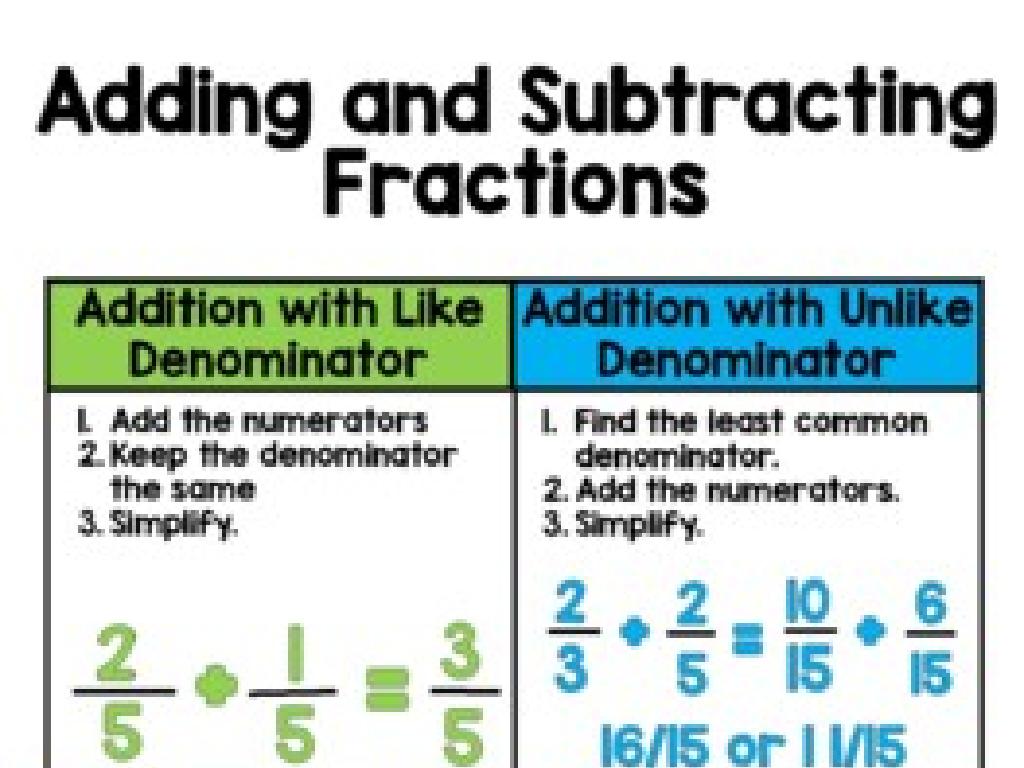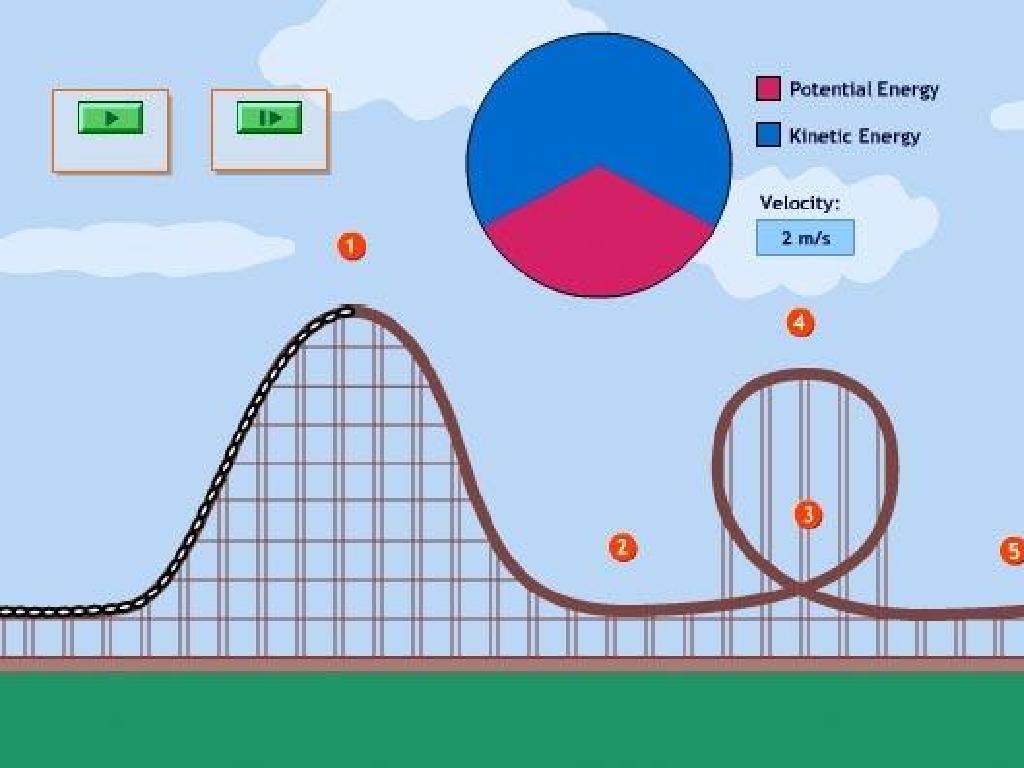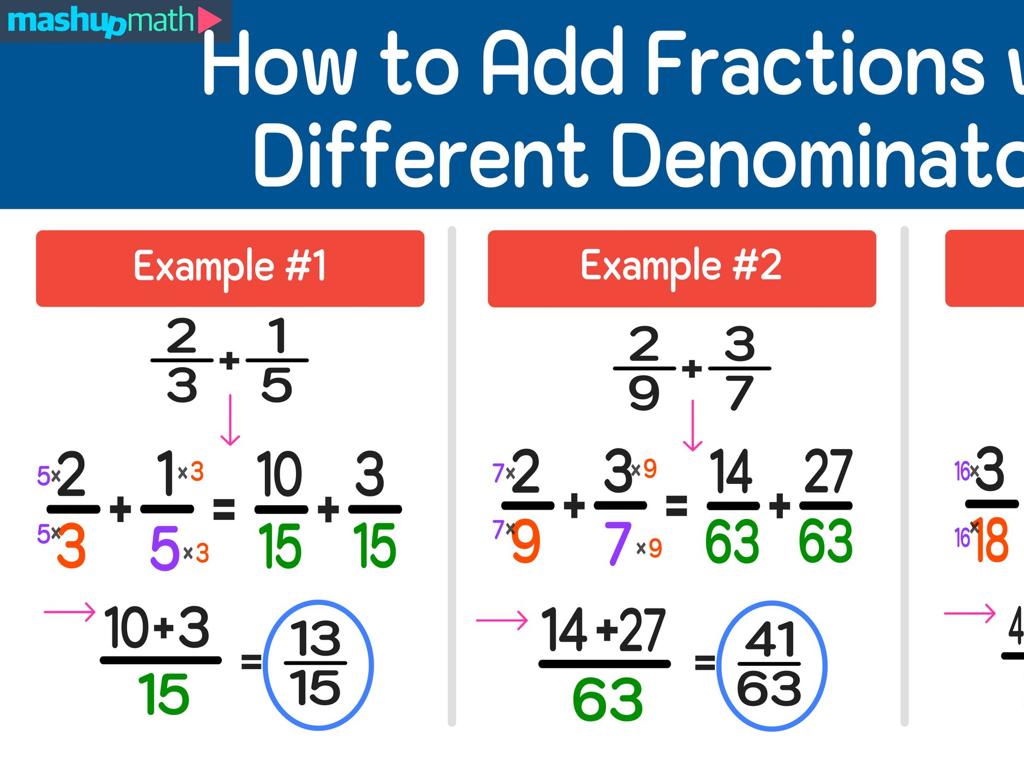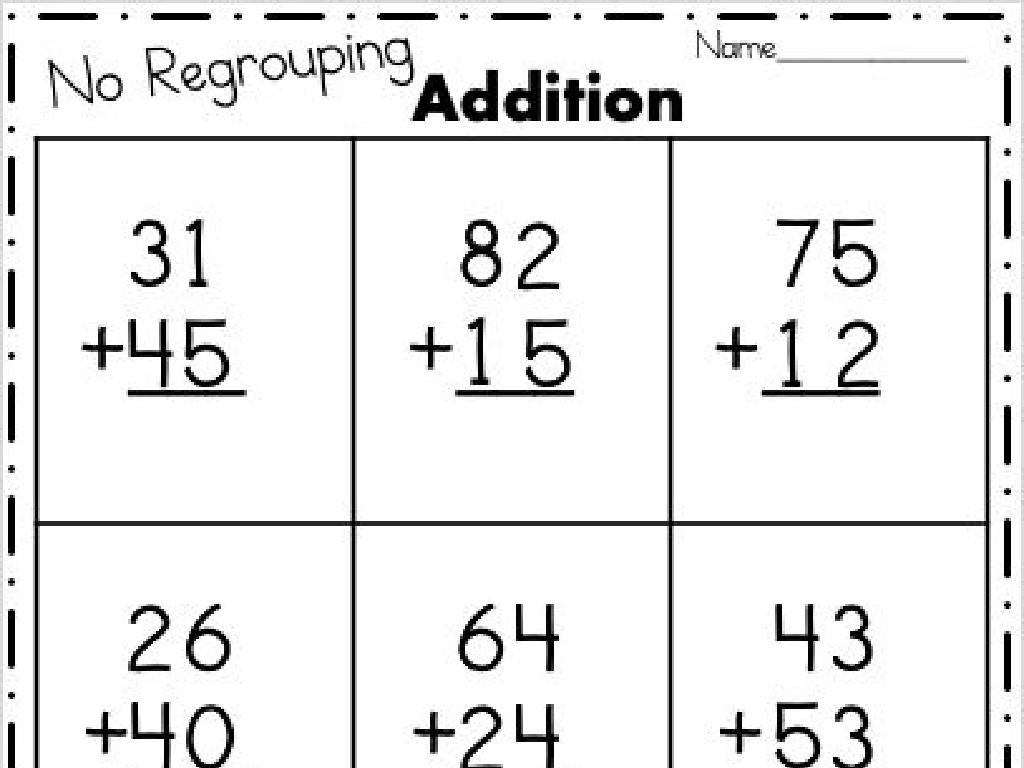Spell The Long E Word: Ee, Ea
Subject: Language arts
Grade: Second grade
Topic: Long Vowel Patterns
Please LOG IN to download the presentation. Access is available to registered users only.
View More Content
Exploring Long ‘e’ Sounds: ee and ea
– Learn about long ‘e’ sounds
– Examples of long ‘e’ words
– ‘see’, ‘bee’, ‘tree’, ‘knee’
– ‘ee’ and ‘ea’ spelling patterns
– ‘eat’, ‘read’, ‘mean’, ‘sea’
– Practice with long ‘e’ sounds
|
This slide introduces the concept of long ‘e’ vowel sounds to second graders, focusing on the ‘ee’ and ‘ea’ spelling patterns. Start by explaining that the long ‘e’ sound is the same sound as the name of the letter ‘e’. Ask the class for examples of long ‘e’ words to assess prior knowledge. Then, present the two common spelling patterns ‘ee’ and ‘ea’ with examples for each. Encourage students to think of additional words that fit these patterns. Conclude with a practice activity where students can apply their understanding by identifying and reading long ‘e’ words in a text or within a word list. This will help reinforce their learning and improve their spelling skills.
The Long ‘e’ Sound
– What is a Long ‘e’ sound?
– It’s the sound in ‘E’ like in ‘eel’
– ‘e’ sounds like its name
– Like when you say ‘E’ for ‘eel’
– Hear it in ‘be’ and ‘see’
– Examples: ‘bee’, ‘tree’, ‘see’
– Spell with ‘ee’ or ‘ea’
– ‘ee’ as in ‘feet’, ‘ea’ as in ‘leaf’
|
This slide introduces the concept of the long ‘e’ sound to second graders. Start by explaining that the long ‘e’ sound is the same as the name of the letter ‘E’. Give examples of simple words they know, like ‘be’ and ‘see’, to illustrate the sound. Then, explain that this sound can be spelled with ‘ee’ or ‘ea’. Provide examples for both spellings, such as ‘bee’ and ‘tree’ for ‘ee’, and ‘leaf’ and ‘read’ for ‘ea’. Encourage the students to think of more words with the long ‘e’ sound and practice spelling them. This will help them recognize the pattern and apply it to their reading and writing.
The ‘ee’ Sound in Words
– ‘ee’ makes the long ‘e’ sound
– Examples: ‘bee’, ‘see’, ‘knee’
– Words like ‘tree’, ‘free’, and ‘cheese’
– Practice saying ‘ee’ words
– Repeat after me: ‘bee’, ‘see’, ‘knee’
– Class activity: Find ‘ee’ words
– Look around, in books, or think of words that have the ‘ee’ sound
|
This slide introduces the long ‘e’ sound made by the ‘ee’ letter combination. Start by explaining the concept of vowel patterns and how ‘ee’ consistently represents the long ‘e’ sound. Provide clear examples like ‘bee’, ‘see’, and ‘knee’, and articulate them with the class to reinforce pronunciation. Engage the class in a fun activity where they find and say words containing the ‘ee’ sound. Encourage them to look in their surroundings or think creatively. This activity helps students recognize the pattern in different words and reinforces their understanding through repetition and application.
The ‘ea’ Sound in Long E Words
– ‘ea’ makes the long ‘e’ sound
– Examples: ‘leaf’, ‘sea’, ‘pea’
– ‘leaf’ like in a tree, ‘sea’ like the ocean, ‘pea’ like the vegetable
– Discover more ‘ea’ words
– Think of words from books or at home with ‘ea’
– Practice spelling ‘ea’ words
– Write them down and spell them out loud
|
This slide introduces the ‘ea’ vowel pattern, which makes the long ‘e’ sound. Start by explaining that ‘ea’ often sounds like the letter ‘e’ when we say it. Provide clear examples with words like ‘leaf’, ‘sea’, and ‘pea’, and show them visually if possible. Encourage the students to brainstorm other words that have the ‘ea’ pattern. You can make this interactive by having a small contest to see who can come up with the most ‘ea’ words. For homework, ask students to find ‘ea’ words in their reading and bring them to class. This will help reinforce their understanding of the ‘ea’ sound and its usage in different words.
Reading Practice with Long ‘e’ Words
– Practice reading sentences aloud
– Focus on long ‘e’ sounds: ‘ee’ and ‘ea’
– Example sentence with ‘ee’
– ‘I can see a bee by the sea.’
– Example sentence with ‘ea’
– ‘Pete and Jean have green leaves.’
|
This slide is designed to help students practice reading sentences that include words with the long ‘e’ vowel sounds spelled ‘ee’ and ‘ea’. Encourage the students to read the sentences aloud, emphasizing the long ‘e’ sound. The example sentences provided use common vocabulary and relatable contexts to make it easier for second graders to understand and remember. During the lesson, ask the students to identify the long ‘e’ words in each sentence and discuss the spelling pattern. This activity will reinforce their phonics skills and improve their reading fluency.
Spelling Practice: Long ‘e’ Words
– Listen to the word I say
– Decide if it’s ‘ee’ or ‘ea’
– Let’s spell ‘tree’ together
– ‘Tree’ is spelled T-R-E-E
– Now spell ‘beach’, ‘seed’, ‘read’
– ‘Beach’ is B-E-A-C-H, ‘Seed’ is S-E-E-D, ‘Read’ is R-E-A-D
|
This slide is for an interactive spelling practice activity focused on the long ‘e’ sound made by ‘ee’ and ‘ea’. Start by saying each word aloud and have the students spell it out, deciding whether to use ‘ee’ or ‘ea’. For ‘tree’, guide them by spelling it out as an example. Then, challenge them to spell ‘beach’, ‘seed’, and ‘read’ on their own or in small groups. Encourage them to think about the sound at the end of the word and whether it is a ‘ee’ or ‘ea’ sound. This activity will help reinforce their understanding of long vowel patterns and improve their spelling skills. Be prepared to offer praise and gentle corrections as needed.
Let’s Play: Matching ‘ee’ and ‘ea’ Words
– Play a matching game with words
– Match ‘ee’ and ‘ea’ words to pictures
– Words like ‘bee’, ‘see’, ‘leaf’, ‘read’
– Work in teams to find matches
– Help each other during the game
– Encourage sharing and cooperation
|
This interactive game is designed to help students recognize and spell words with the long ‘e’ vowel sound spelled ‘ee’ or ‘ea’. Set up stations with pictures and corresponding words on cards. Students will work in small groups to match each word to the correct picture. Encourage teamwork and peer assistance to foster a collaborative learning environment. As an extension, students can use the matched words in sentences or draw their own illustrations. Possible words for the activity include ‘bee’, ‘tree’, ‘sea’, ‘pea’, ‘feet’, ‘meat’, ‘seed’, and ‘read’. This activity will reinforce their understanding of long ‘e’ vowel patterns in a fun, engaging way.
Class Activity: Long ‘e’ Word Hunt
– Let’s hunt for long ‘e’ sounds
– Find objects or pictures with ‘e’
– Write the words and their ‘e’ type
– For example, ‘bee’ (ee) or ‘leaf’ (ea)
– Share your findings with the class
|
This activity is designed to help students recognize and differentiate between the ‘ee’ and ‘ea’ long ‘e’ vowel patterns in a fun and interactive way. Set up the classroom with various objects or pictures that contain the long ‘e’ sound. Encourage students to explore the room and write down the words they find, noting the type of long ‘e’ used. After the hunt, have students share their words with the class, reinforcing their understanding of the vowel patterns. Possible variations of the activity could include a timed challenge, team competition, or creating a classroom display with the collected words.
Mastering Long ‘e’ Sounds: Conclusion
– Congratulations on learning long ‘e’!
– ‘ee’ and ‘ea’ both say ‘e’
– Like in ‘bee’ and ‘leaf’
– Practice makes perfect spellers
– Try writing new words every day
– Keep up the great work at home!
|
This slide wraps up the lesson on long ‘e’ sounds, reinforcing the idea that both ‘ee’ and ‘ea’ can represent the long ‘e’ sound in words. It’s a congratulatory note that encourages students to continue practicing their spelling skills outside of the classroom. Remind students that consistent practice is key to becoming proficient in spelling. You can suggest that they read books, write stories, or play word games to reinforce their understanding. Acknowledge their hard work during the lesson and motivate them to keep learning and exploring new words with the long ‘e’ sound.

